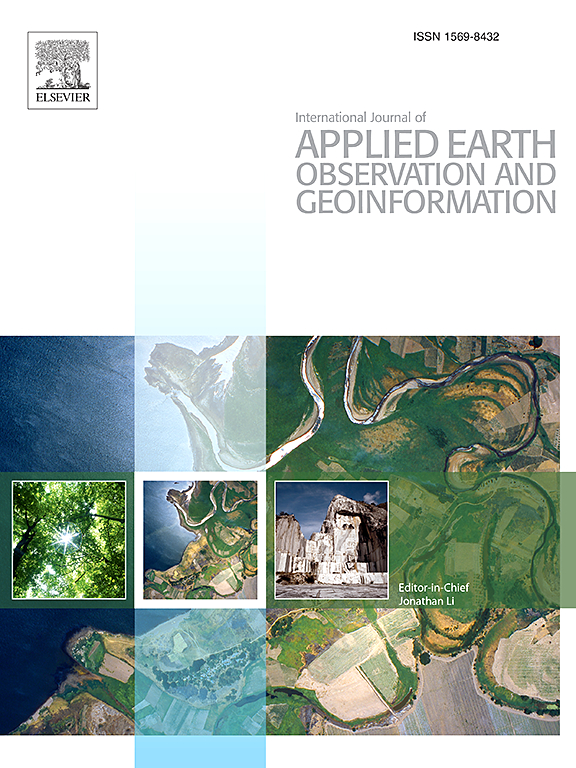SD-Mamba: A lightweight synthetic-decompression network for cross-modal flood change detection
IF 7.6
Q1 REMOTE SENSING
International journal of applied earth observation and geoinformation : ITC journal
Pub Date : 2025-02-01
DOI:10.1016/j.jag.2025.104409
引用次数: 0
Abstract
Cross-modal flood change detection using optical and SAR images has become one of the most commonly used techniques for monitoring the progression of flooding events. Existing methods fail to adequately capture the interrelationship between semantics and changes, which limits the potential for effective flood detection. To address this issue, we propose a lightweight Synthetic-decompression network. The synthetic component is divided into four stages, each of which employs a Multi-branch Asymmetric Part-convolution block (MAPC) and a Temporal Semantic Interaction module (TSIM) to extract semantic features from dual-temporal images. Subsequently, these features are fed into the Temporal-mamba (T-Mamba), which uses 4D Selective Scanning (SS4D) to traverse temporal change information in four directions. The decompression component employs a three-stage Asymmetric Coordinate-convolution block (ACoord-Conv) to project the change results onto the source images, thereby indirectly supervising the model’s detection performance. Compared to the 22 state-of-the-art (SOTA) lightweight methods, SD-Mamba achieves an optimal balance between computational efficiency and detection accuracy. Under the same computational conditions, SD-Mamba demonstrated superior performance to other Mamba-based models, with an improvement of 1.01% in mIoU, while maintaining a lightweight structure with only 5.32M parameters and 12.24G floating-point operations (FLops). The code is available at https://github.com/yaoshuang-yaobo/SD-Mamba.

求助全文
约1分钟内获得全文
求助全文
来源期刊

International journal of applied earth observation and geoinformation : ITC journal
Global and Planetary Change, Management, Monitoring, Policy and Law, Earth-Surface Processes, Computers in Earth Sciences
CiteScore
12.00
自引率
0.00%
发文量
0
审稿时长
77 days
期刊介绍:
The International Journal of Applied Earth Observation and Geoinformation publishes original papers that utilize earth observation data for natural resource and environmental inventory and management. These data primarily originate from remote sensing platforms, including satellites and aircraft, supplemented by surface and subsurface measurements. Addressing natural resources such as forests, agricultural land, soils, and water, as well as environmental concerns like biodiversity, land degradation, and hazards, the journal explores conceptual and data-driven approaches. It covers geoinformation themes like capturing, databasing, visualization, interpretation, data quality, and spatial uncertainty.
 求助内容:
求助内容: 应助结果提醒方式:
应助结果提醒方式:


